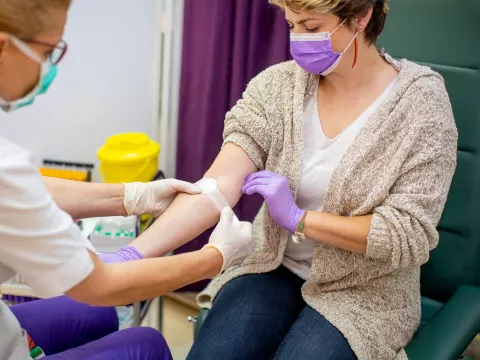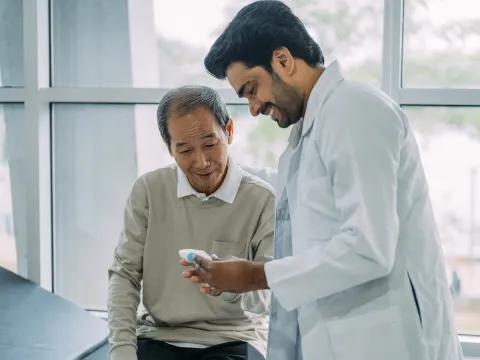- AdventHealth

Giving to others is a great way to feel whole. And giving blood is a kind, selfless act that can save up to three lives. Now that’s something that can truly touch your heart.
Uncertainty about the process often causes first-time donors to hesitate. If you’ve never donated blood, we’re here to ease your mind and empower you to donate by learning what to expect.
How to Register
During the coronavirus pandemic, donated blood is needed more than ever. But according to the FDA, the number of blood donations is down. The donated blood supply has been reduced during the COVID-19 pandemic because of social distancing and the cancelation of local blood drives.
Fortunately, you can still help by reaching out to your local blood donation center. Call them to learn about their current protocol and to book your appointment.
Health History
Expect the donation center to be following safety and cleanliness protocols to protect you during your visit. When you arrive, you'll check in for your appointment and then be taken to a private area where you can answer questions about your health history. You may answer these questions online, on paper or a volunteer may ask them:
- If you take certain medicines
- Where you’ve traveled recently
- If you have cold, flu or COVID-19 symptoms
- When you last donated blood
Rest assured: your answers are kept confidential and private.
Health Check
Since there are some physical health requirements for donating blood, you’ll likely undergo a quick physical health check. Tests may include a blood sample (finger prick) as well as checking your vitals. To donate blood, you must:
- Have a normal iron level (a low iron level may mean it’s unsafe for you to donate)
- Have a temperature, blood pressure and pulse within a healthy range
- Weigh 110 pounds or more
- Are at least 16 years old
Donation
If you’re eligible to donate, you’ll comfortably sit in a chair or bed where your blood will be drawn from a vein in your arm. To do this, a tourniquet (rubber band) is placed around your upper arm, and you’ll squeeze a stress ball. This will increase the blood pressure in your arm, making it easier to find a good vein for donation.
Then, the area will be cleaned before a small needle is inserted into the vein around the bend of your arm. The needle is attached to a small tube that directs your blood into three different tubes for testing, and then into a blood collection bag. The needle will stay in place until the tubes and the bag is full. Overall, you’ll donate about one out of the 10 pints of blood in your body.
Most blood donations take eight to 10 minutes to complete. And you are encouraged to make the process more relaxing by bringing activities that soothe your mind, such as music, a book, your phone or a friend to talk to.
If you feel light-headed or dizzy during donation or recovery, always tell someone who can help you immediately.
Recovery
Once your blood has been collected, the needle is removed from your arm and a cotton ball is placed on your arm where the needle was. Holding the cotton ball there for a few minutes before it's wrapped or bandaged will help to stop the bleeding.
After about 15 minutes of recovery, where you will rest and have a snack to help bring up your fluid and iron levels, your vitals are checked to make sure that you feel well. Then, you can go about your day as normal. One thing to keep in mind is that you will be eligible to give blood again in 56 days from the date of your donation, so mark your calendars and make donation a regular part of your ideas to pay it forward. Just think, in one year you could possibly save up to 12 lives. That makes you a hero.
Blood Testing
After your appointment, your blood donation will go to a processing center for typing and testing. It will also be split into three different usable parts: red blood cells, plasma and platelets.
These three different parts of your blood can help three different people. Your donation will be held in a blood bank until a hospital needs them. For example, your red blood cells may go to someone who was in a serious accident. Your plasma may go to a patient who has a severe infection. Your platelets may go to a patient in chemotherapy. And that’s how with one blood donation, you can save up to three beautiful lives!
To learn about Lab Services we offer, click here. If you’d like to donate blood, want to learn more about the donation process or discover other ways you can help, here is a list of resources in your area:
Florida
Phone: 888-9-DONATE (936-6283)
Georgia
Phone: 800-962-0628
Kentucky
Phone: 800-775-2522
Kansas
Phone: Call1-888-647-4040
North Carolina
Phone: 864-255-5000
Texas
Phone: 817-412-5830
Wisconsin
American Red Cross Bloodmobile
Phone: 877-618-6628




